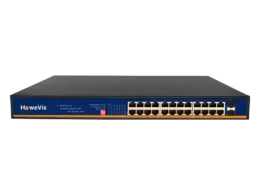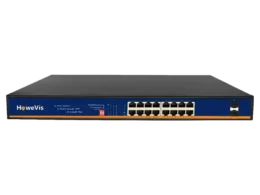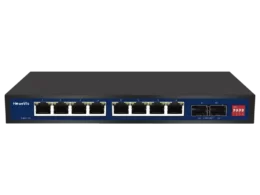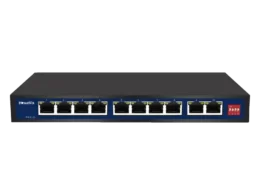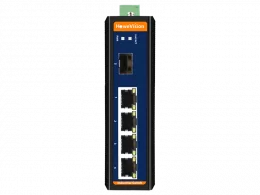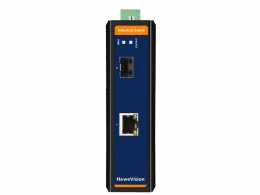Introduction
Many people are unfamiliar with Gigabit switches and how they work. Thus, they cannot figure out if they need a gigabit switch.
They may also wonder the difference between a router, modem, and gigabit switch. Unfortunately, many users still assume these three devices are the same.
Of course, you need a gigabit switch if your networking needs are high. For example, you want a stable yet faster connection. Besides, you also want to ensure you get a smooth transmission speed. In all such cases, you need a gigabit switch.
Thus, in this article, I will touch on these topics. Also, this post will give you some helpful tips to determine whether you need one for your home network!
The Basics of a Gigabit Switch
Let me start by explaining the basics of a gigabit switch. A gigabit switch is a networking device that connects many devices in your home or office.
It works as the primary hub for all your internet activities. The gigabit switch allows you to share high-speed connections across different computers. Besides, most of them also provide access points for wireless capabilities.
A gigabit switch creates a local area network (LAN) via cabling. Then, the LAN can be connected to a more extensive network outside the Gigabit switch.
One can connect the gigabit Ethernet switch to many devices like computers. Also, connection to servers is possible.
It also allows 4K HDTVs and DVRs that are not Wi-Fi compatible to connect to the internet. Of course, you can do so without dealing with any issues associated with wireless connectivity.
Also, faster data transfer speeds improve response time and frame rate, making everything run smoothly on your network.
In short, a gigabit switch can expand via extra ports, which means you’ll have no problem expanding beyond what was before. This is possible for your home or business LAN’s connection speeds.
How Does Gigabit Switch Work?
A Gigabit switch creates a local area network (LAN) via cabling. There are three straightforward ways to do this.
First, you can connect the LAN to a more extensive network outside the Gigabit switch.
Second, you can do it through an Ethernet cable linked to your modem.
Finally, the third way is to connect a switch through a router for internet access.
Switches connect many devices, including wireless routers and adapters. Communication does not need a separate switch since it can be done independently.
Thus, I often say that gigabit switches show an upward trend in popularity due to their widespread use.
How Does Gigabit Switch Help?
A Gigabit switch provides a central location for connecting many devices and allowing you to share an internet connection.
If your switch has many ports, like this 24-port industrial PoE switch, you can connect your printer, scanner, or other peripherals across your network.
Also, the gigabit switches can enable you to turn a wired network into a wireless one. As a result, it will help save money on the purchase of many Gigabit routers.
Know the Differences Between Router, Modem, and Gigabit Switch
The user must know the differences between a gigabit switch, router, and modem. This will ultimately help them determine whether they need a gigabit switch.
What Is a Modem?
A modem is a small box between your computer and a wall outlet. If you use DSL or dial-up, it will connect to a phone line or cable connection. In contrast, cable internet users can use an available coaxial cable.
What Is a Router?
A router is a crucial part of any home or office network. It facilitates the smooth passage of data packets between different devices and allows computers and phones to connect across a wide range to share information.
Routers are devices that help transfer information across connected locations. They do this by directing data through predetermined pathways within computer networking systems. It is to support diverse operating modes, including circuit-switched and packet-switched services.
This device creates a network for all computers to connect. It also manages the traffic flow between them.
Some routers also protect your devices with their firewalls. They also have wireless access points that let you connect without cords!
What Are Switches?
Switches are the building blocks of small business networks. They connect all devices and share information, regardless of their physical location, which can be in a building or campus. Here are the benefits of using a switch.
Remember, building a network without switches is impossible. It would be like creating an orchestra without violins – lots of noise but no melody!
Switches can manage traffic, but not all provide advanced services like firewalls. Still, they are never supposed to be the first between your computer and the outside world. Instead, they work in tandem with routers that handle all incoming information.
Router vs. Modem
A router joins networks together and routes traffic between them. For example, it allows you to access the internet at home. The router connects to your ISP’s network on one end and a local switch (internal local network) on another.
The Internet port connects with the modem provided by an ISP. Its remaining ports are for switches that connect devices. This connection can be in your internal household or office-wide LAN.
Routers operate at OSI model 3, which deals with IP addresses. They also join networks and route traffic between them.
Moreover, this device ensures the utmost security. For example, hackers often try to access computers over public Wi-Fi connections, such as cafes. So, routers keep us safe from hackers.
Router vs. Switch
A router and a switch are crucial components of your network infrastructure. Yet, they serve different purposes.
For example, a router connects many computers and lets them share resources such as an Internet connection on the local area network (LAN). A switch connects one point in an office or home to another by turning it on/off as necessary.
A simple explanation of this difference would be that routers work at layer 3 of the OSI model, while switches operate within Layer 2. This 2-layer allows for communication between systems over short distances only.
Furthermore, Switches can create virtual LANs, so more than one computer can communicate without accessing others’ files, etc.
Do You Need A Gigabit Switch? – Analyze Your Needs!
Before purchasing any networking equipment, you should analyze your needs first. It will help you determine which device best suits them.
For example, if you are looking for speed and have many devices, Gigabit switches are great.
That’s because the gigabit switch provides higher speeds than standard networking equipment. They work at a Gigabit speed (1000 Mbps).
Know the Role of Gigabit Switch
An unmanaged switch is a great device to use for personal home networks.
Consider using the eight or 12-port PoE-managed switches if you need something more advanced. The switches are appropriate for larger enterprise environments with over 100 computers.
An IT technician can manage industrial PoE switches and ensure they work in your business environment.
Know the Forwarding Rate
The forwarding rate is vital to the buyer when buying a gigabit switch.
For example, some switches can only accept data at full wired speed on half their ports. At the same time, others might not achieve this feat even with the use of all ports.
Thus, businesses and homes must determine which performance level they need. Choosing an appropriate switch with little fuss or unnecessary expense is crucial!
Final Thoughts!
Choosing a suitable network device is not easy. This blog post aimed to determine whether you need a gigabit switch. I also touched on other topics, like Gigabit switches and how they can improve your home network.
You can also read “How Do I Choose a Gigabit Switch?” to learn more about a gigabit switch selection.
In short, it is essential to analyze your needs. A buyer should do this before purchasing any networking equipment. It will help you determine which device best suits them!

